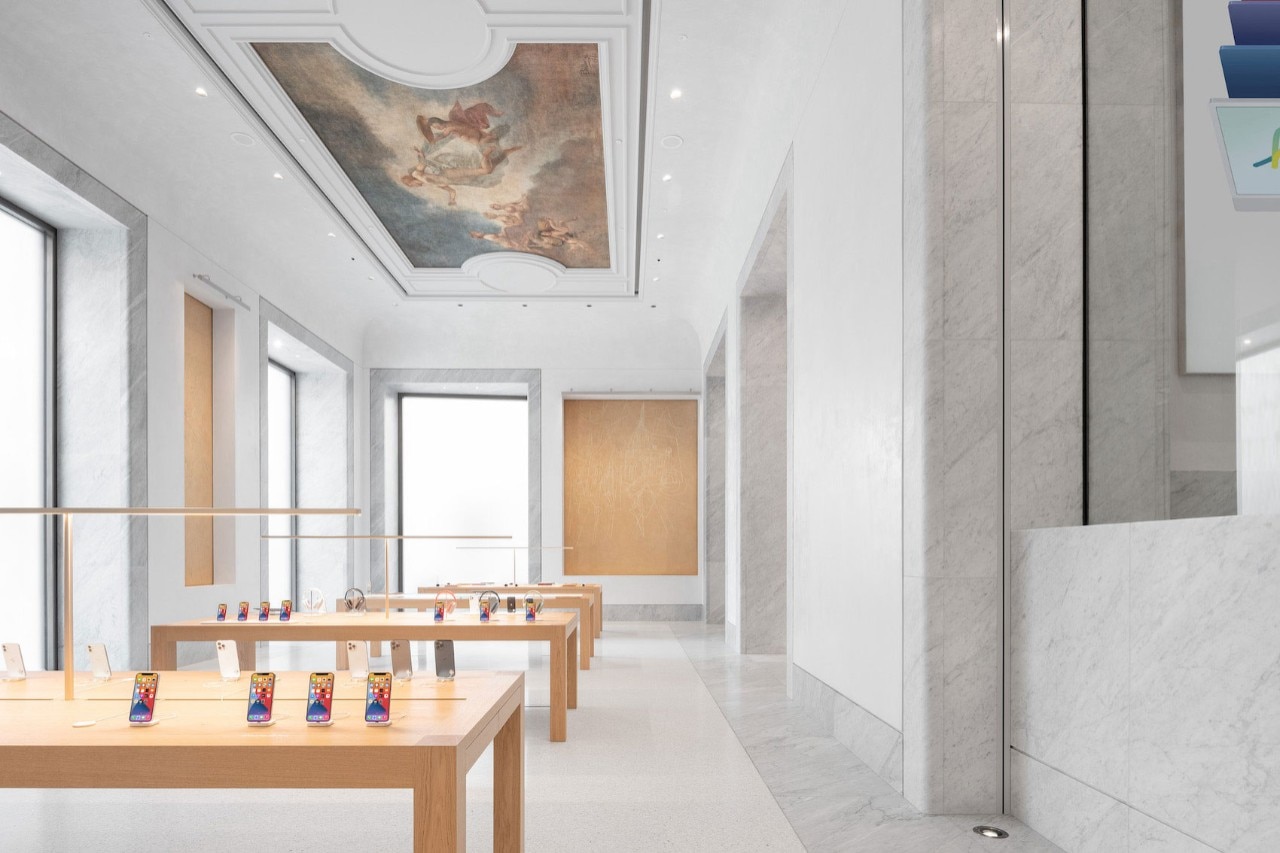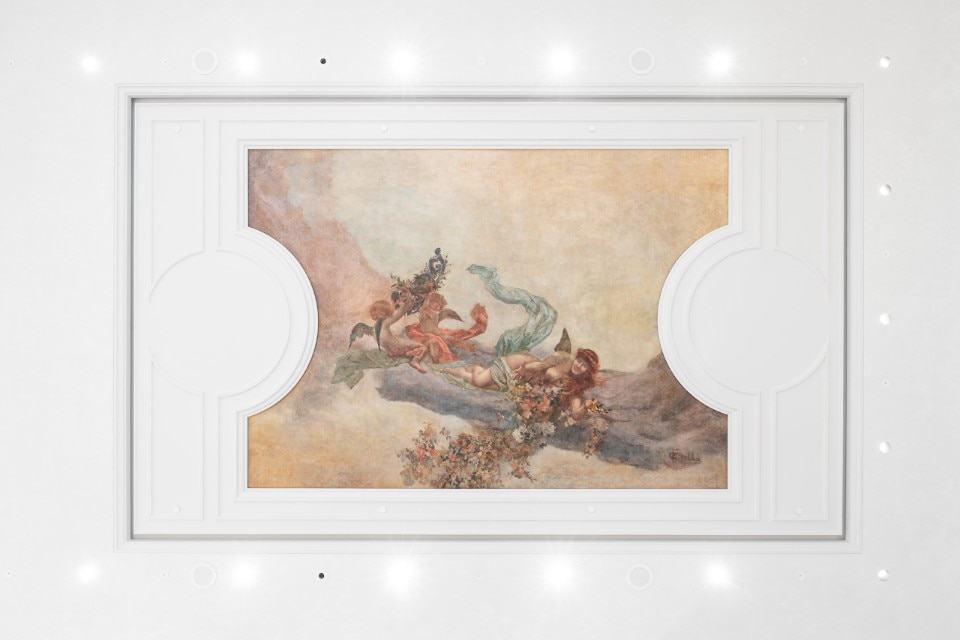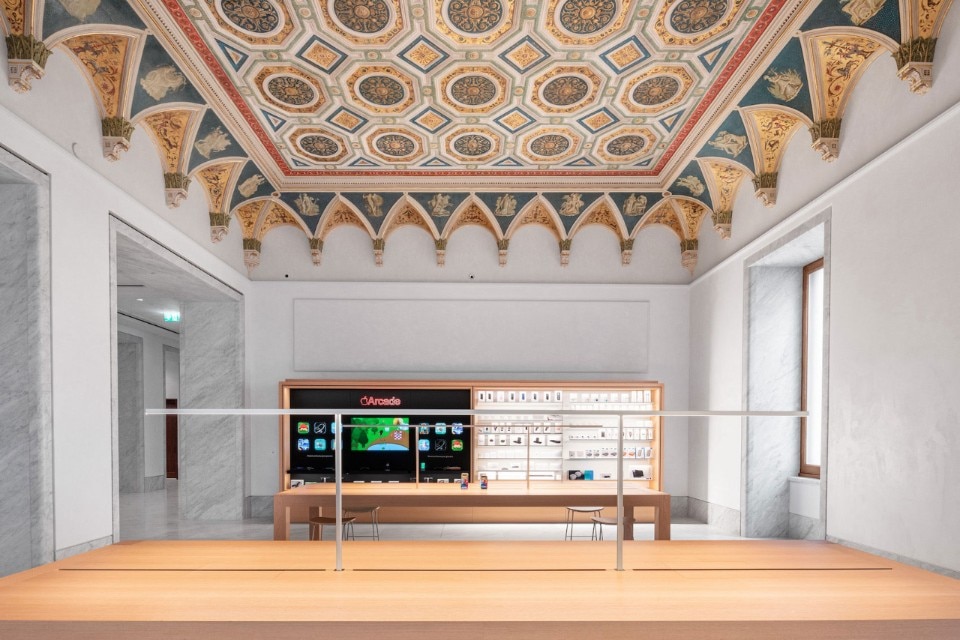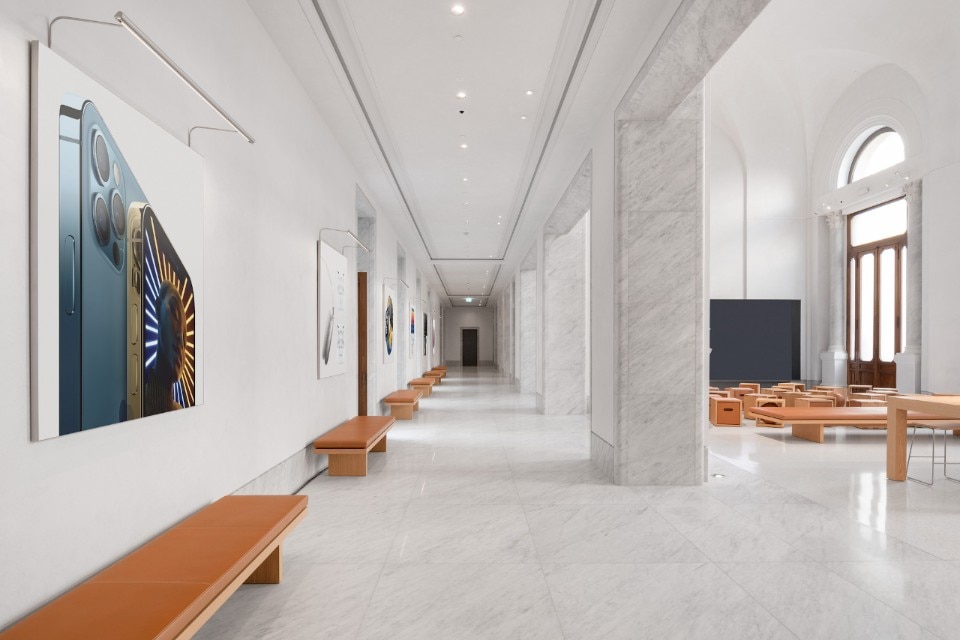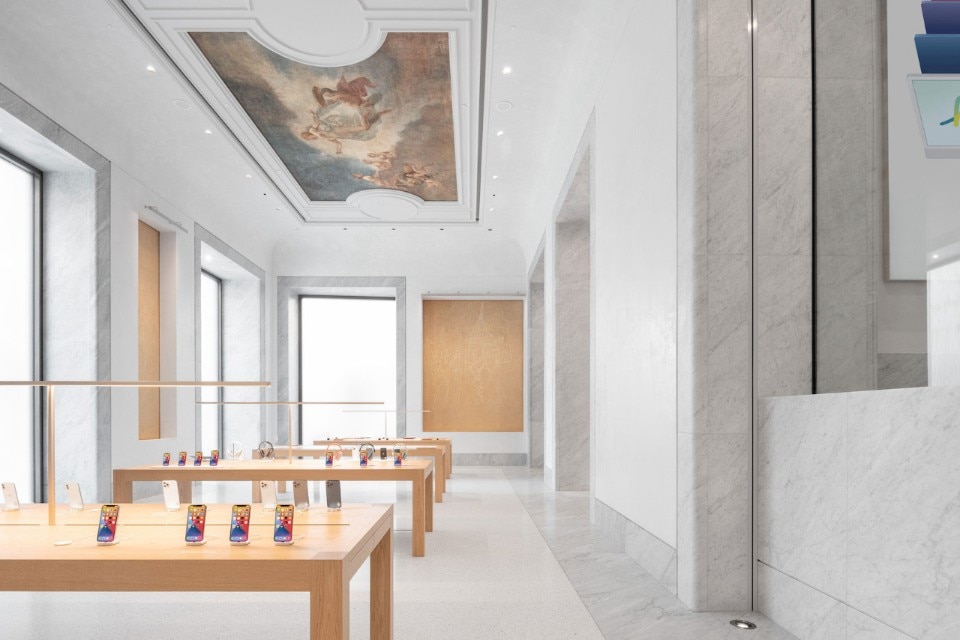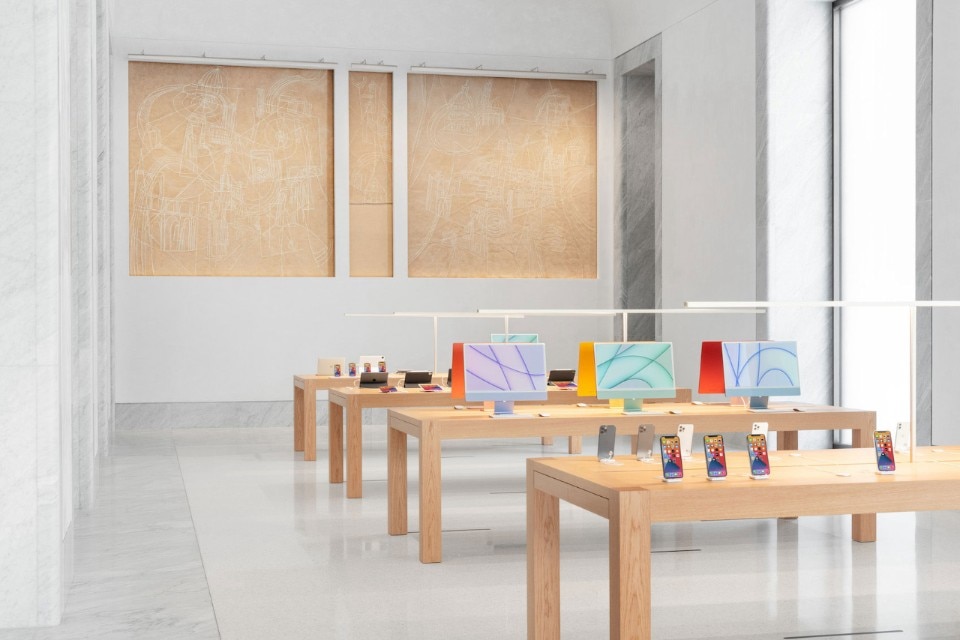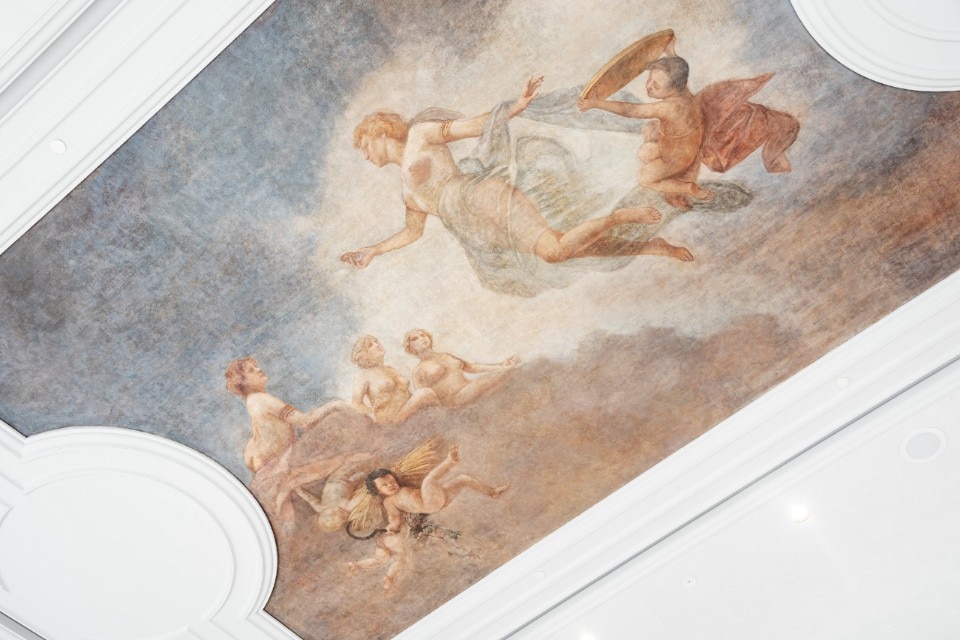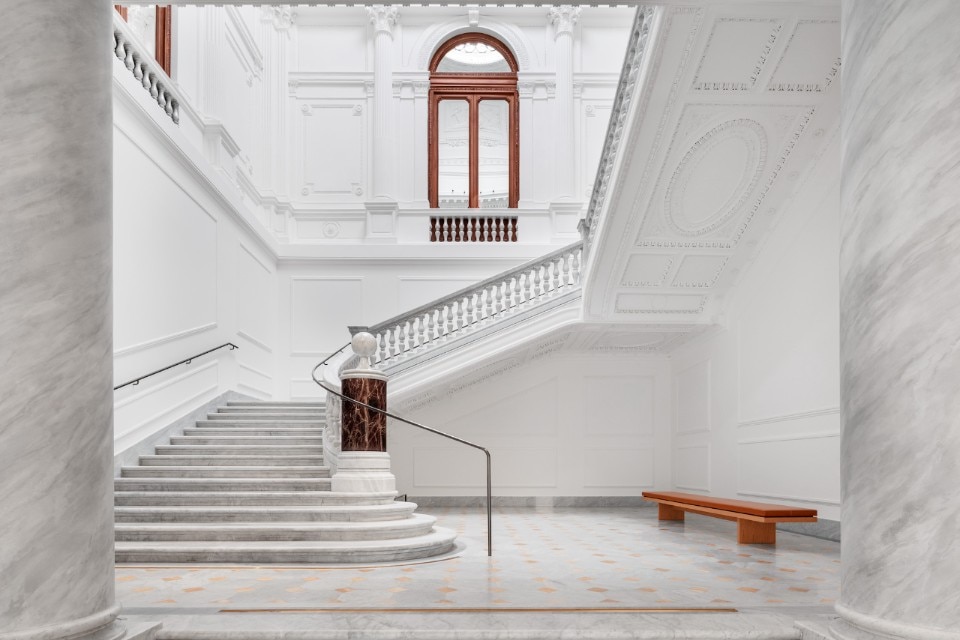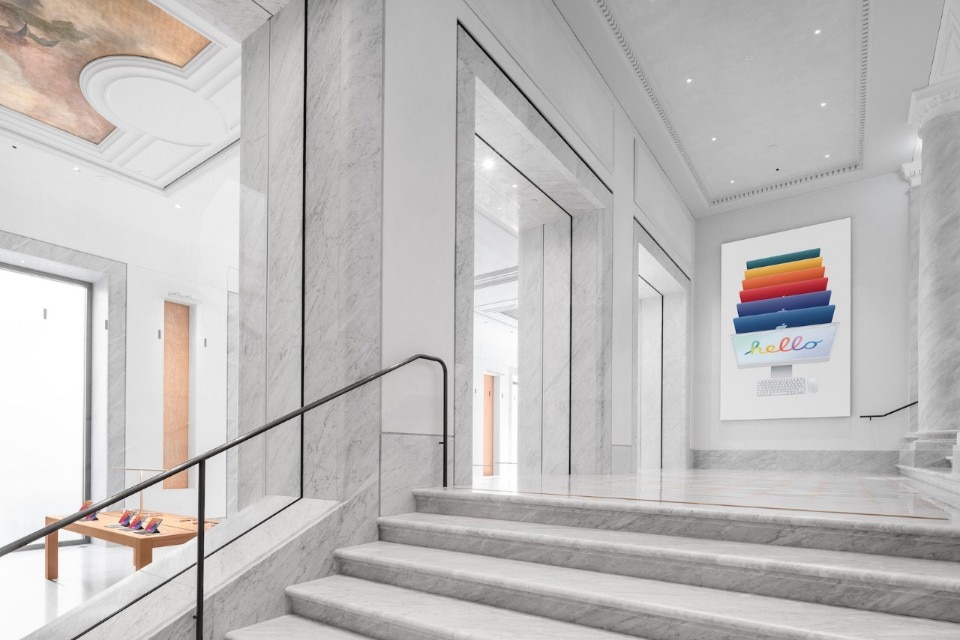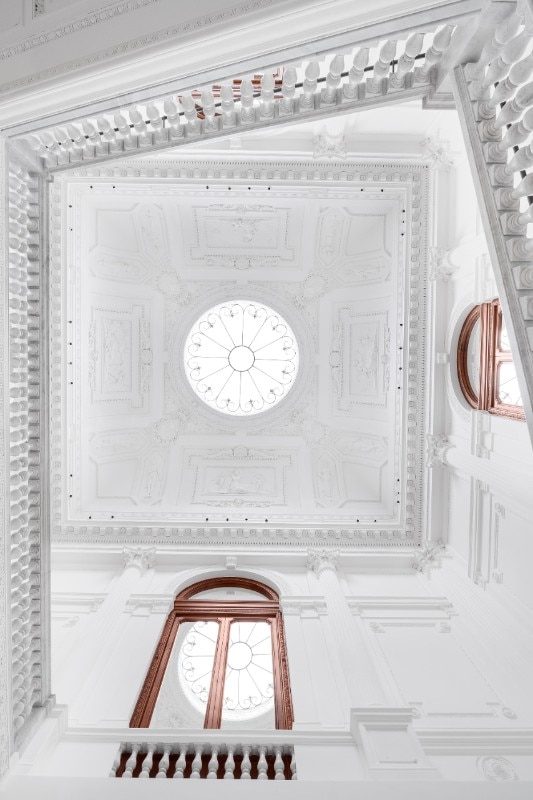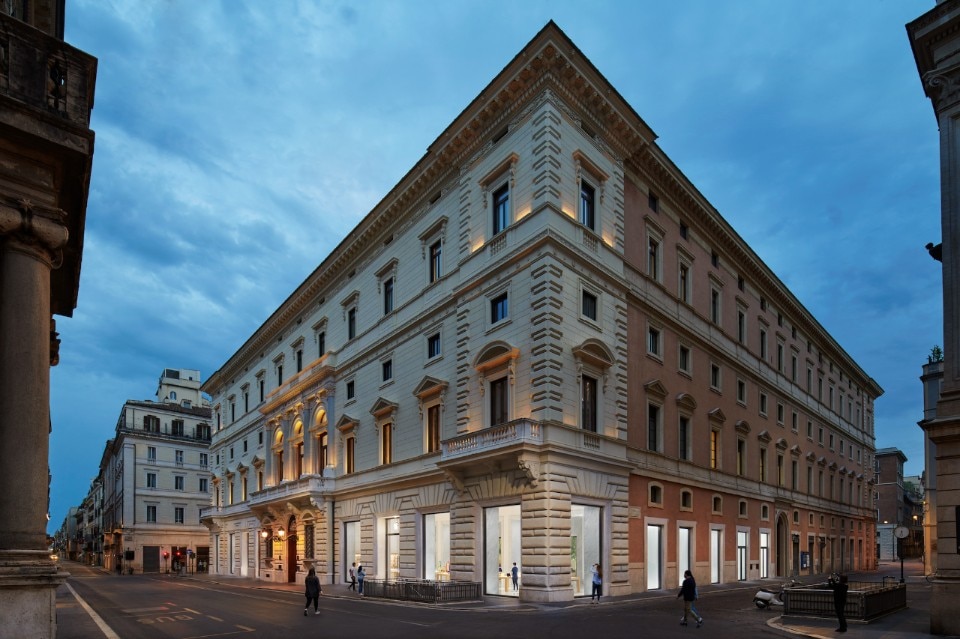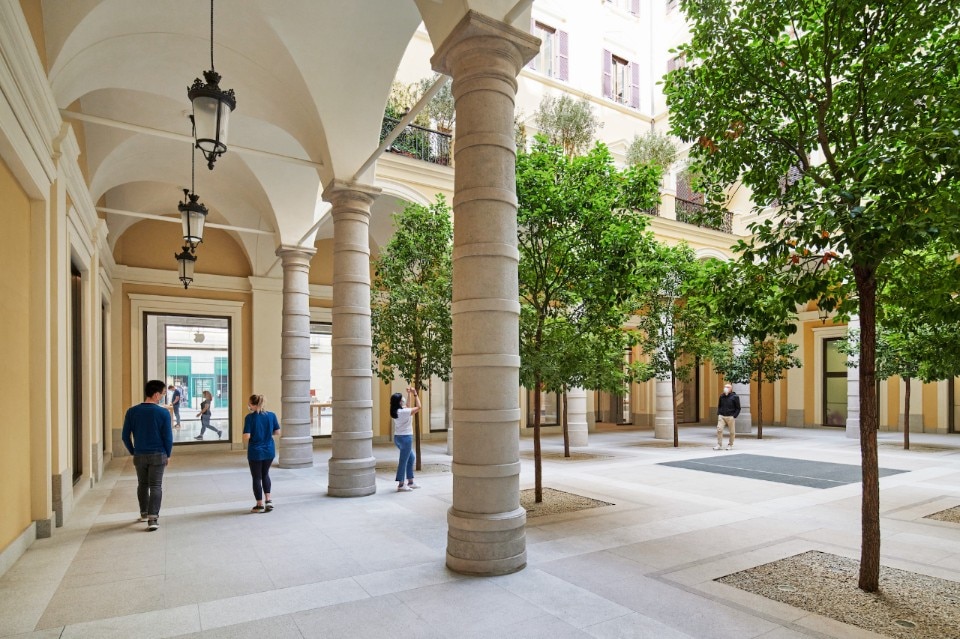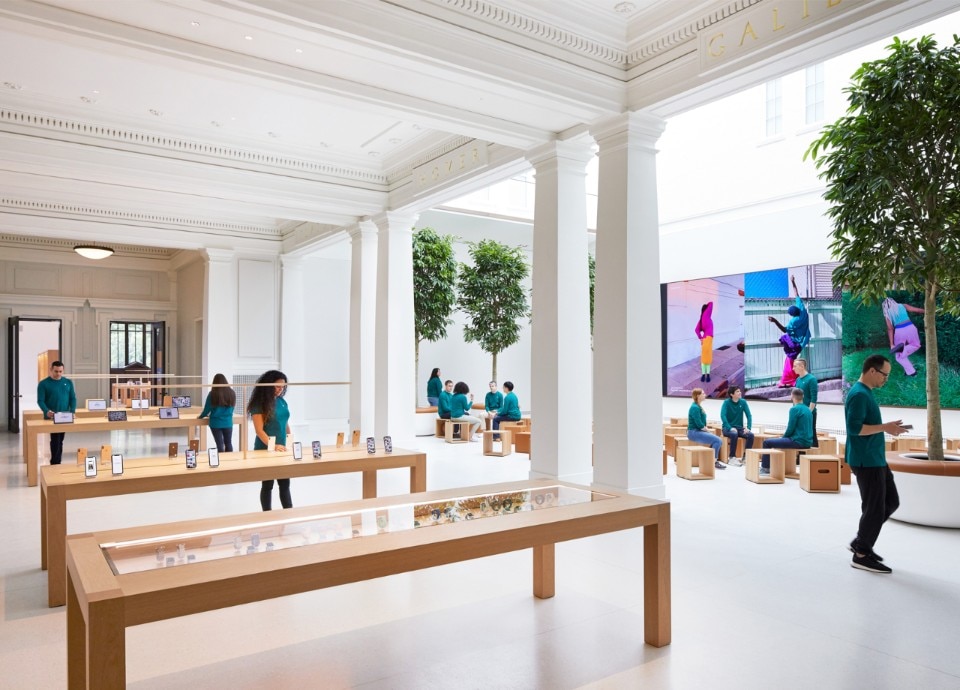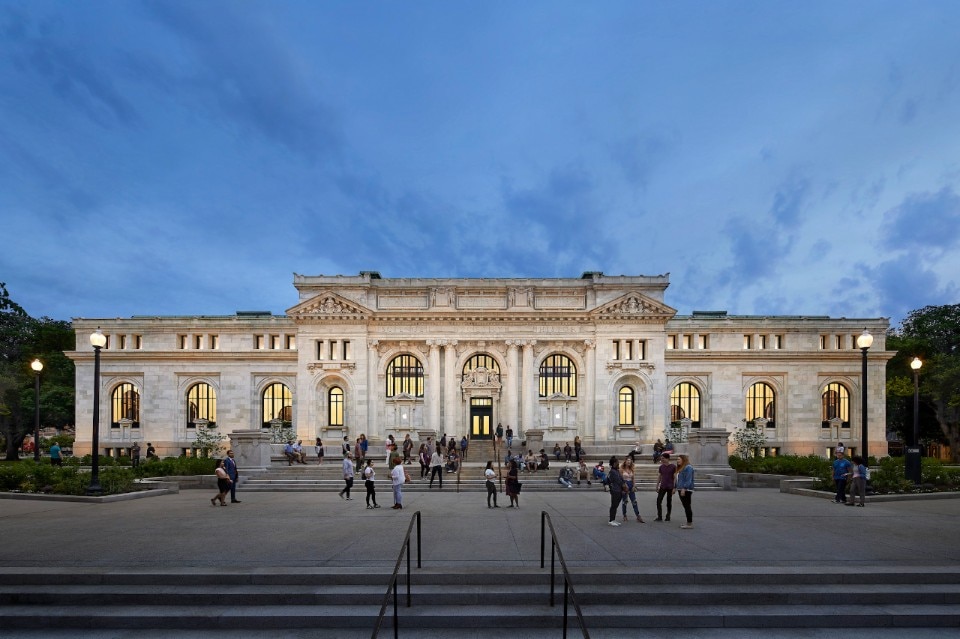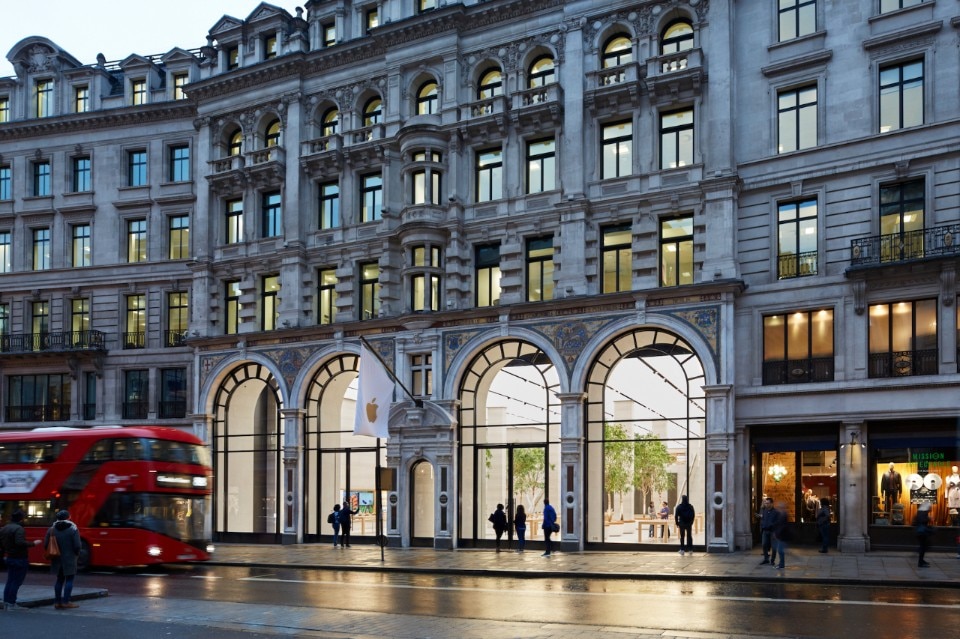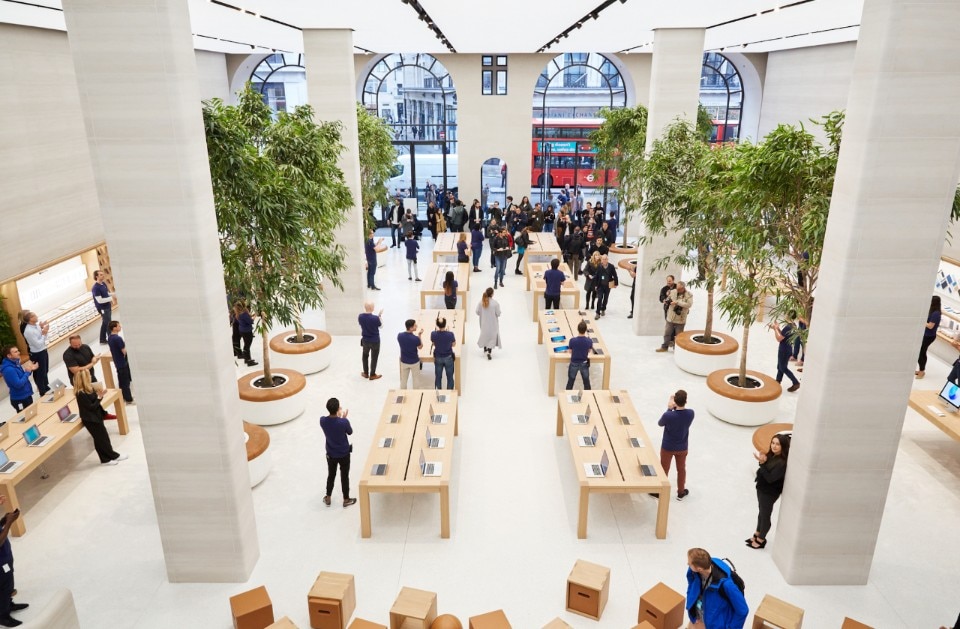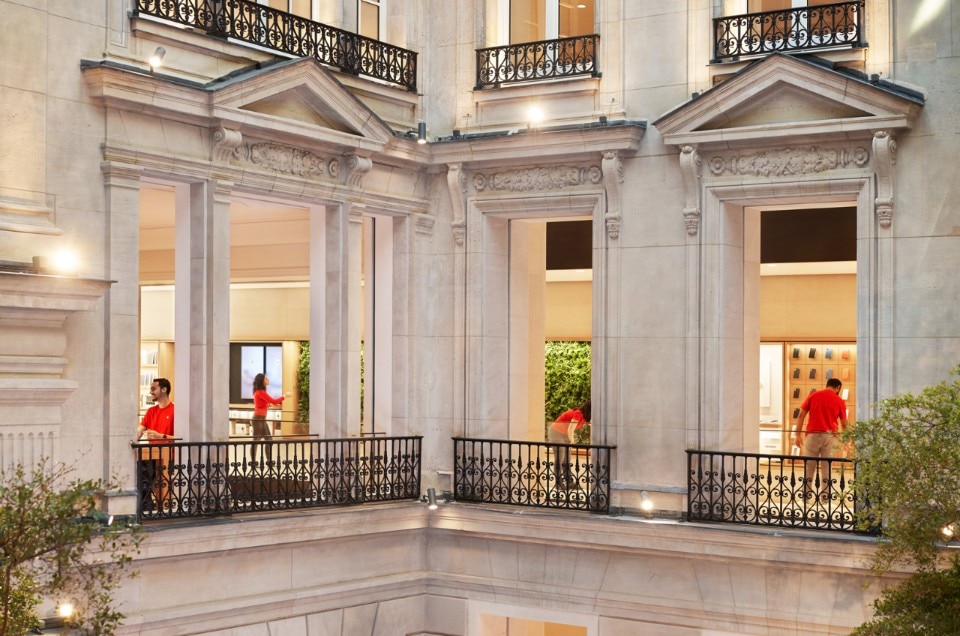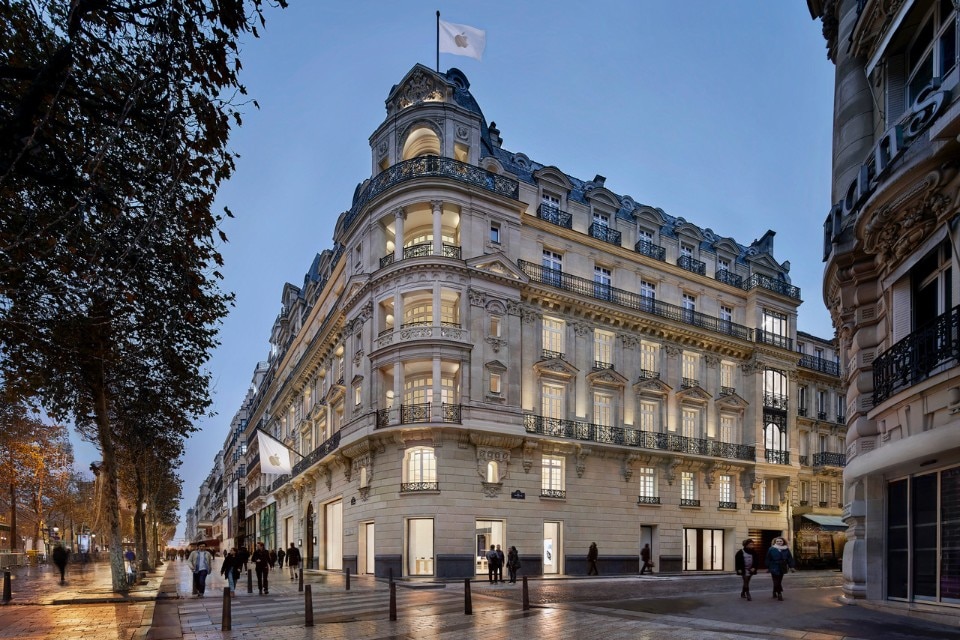After the postponement of the opening scheduled for spring 2020 due to the pandemic, Apple and Foster+Partners are finally ready for the inauguration of the Californian company’s new flagship store in the capital. “Most of our shops in Europe have reopened their doors. We can’t wait to welcome our customers back,” Chris Braithwaite, Apple’s Senior Director of Retail and Design, happily tells us. “As our 17th Italian opening, Via del Corso will be our largest shop in Europe”.
The Californian company and the architecture firm have worked together on numerous projects over the course of a decade-long collaboration, including the Milan store in Piazza Liberty, completed in 2018, where a tall glass volume acts as a backdrop for a new amphitheatre-square. For the Eternal City, on the other hand, the duo preferred to work inside a historic building in Via del Corso, a well-known historic street just a stone’s throw away from Montecitorio. The site was formerly occupied by a monastery from the 16th century, while the current building was constructed in 1884 for Marquis Marignoli, designed by architects Salvatore Bianchi and Giulio Podesti. The ground floor also housed Caffè Aragno, a meeting place for artists, journalists and politicians thanks to its proximity to Parliament, Palazzo Chigi and many newspaper offices.
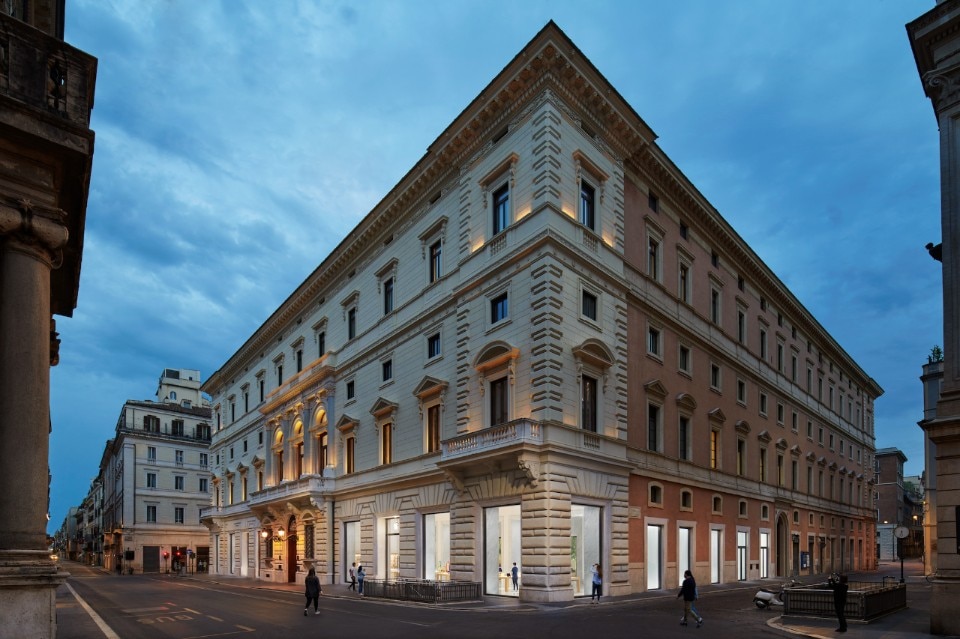
“The main focus of the project is restoration,” continues Braithwaite. The Via del Corso flagship occupies part of the ground floor of the building and extends seamlessly towards the inner courtyard and the wide staircase leading to the upper floor. The project is also enriched by the recovery of works of art found during the first works on the building: from the ceilings painted by Fabio Cippola and Ettore Ballerini to the graffiti by post-cubist Afro Libio Basaldella, all restored by local craftsmen, thanks to the collaboration between the brand, the Municipality of Rome, the Superintendence of Archaeology, Fine Arts and Landscape and the property.
Basaldella, in particular, who died the same year Apple was founded, is considered one of the most important figures of post-war Italian painting. After a period in Rome, he enjoyed international success in the United States. “The graffiti, engraved in plaster,” says Andrea Leva, Director of Design for Apple, “were commissioned by Caffè Aragno during the artist’s time in New York: they depict landscapes of Italian regions such as Tuscany, Sicily and Piedmont, but we do not exclude the possibility that others were commissioned in addition to the six found. We have restored them using the detachment technique; they were removed from the wall, brought to the workshop and carefully restored to their original condition. They are now in their original positions on the ground floor”.
Celebrating a piece of architecture does not mean wanting to preserve everything, but instead you have to go back to the essence of the old building
The plan of the Palazzo followed a canonical classical layout, with the facade characterised by Renaissance styles and rhythms. Marignoli, who had become involved in the world of politics after purchasing the Palazzo, lived on the main floor (piano nobile), which was not directly accessible before the restoration work. “Originally, there was a wall at the entrance that blocked the view of the courtyard, concealing the marble staircase,” says Stefan Behling, Senior Executive Partner of Foster+Partners. “The staircase was used by the Marignoli family to get to their rooms. However, it was necessary to make it visible, to show the existence of an upper floor and enable customers to go upstairs”.
Foster+Partners’ restoration operation is, therefore, respectful of the building’s history and value, without claiming to preserve everything that existed before. By completely changing its function, the floor plan has also undergone significant changes, reversing the building’s introspection in order to open it up visually towards the street, facilitating the flow of customers and the new programme. “When dealing with a historic building, we always try to make clear what is old and what is new,” explains Luis Mantania, Senior Executive Partner of the firm. “Celebrating a piece of architecture does not mean wanting to preserve everything, but instead you have to go back to the essence of the old building. In this case it was a big palace, so people will feel the strength and grandeur of the building. We love the old and we love the new. We are not so comfortable in the middle. We like this juxtaposition of old and new, which is a modern interpretation of what has been.”
When you are in Rome you have to respect history, you understand that you are only there for a short fragment of time
Materially, on the other hand, the ever-present wooden display tables are accompanied by a backdrop of wide arches covered with Carrara marble panels, chosen as a noble material to echo the distinguised stone of the staircase. “What is the appropriate material for this intervention? We told ourselves that this was a grand building and that it needed an equally grand material, one that would fit the bill. Each piece of marble was numbered and dry-laid on the site. Each piece is prepared and matched so that the grain continues without interruption. I think this really gives a sense of scale and conveys the care that went into making the marble slabs from the blocks. This work ensured that the texture of the structure and the veining is consistent and appropriate”. In addition, in the interior, the covered courtyard manages to preserve, thanks to clever technical moves, the feeling of receiving natural light: “this is another funny story: we liked the idea of having a natural light effect where the monumental staircase was. We played with the colour temperature so as to have a warmer colour inside, while the roof of the open space is lit with LEDs that simulate the changing tones of the daylight”.
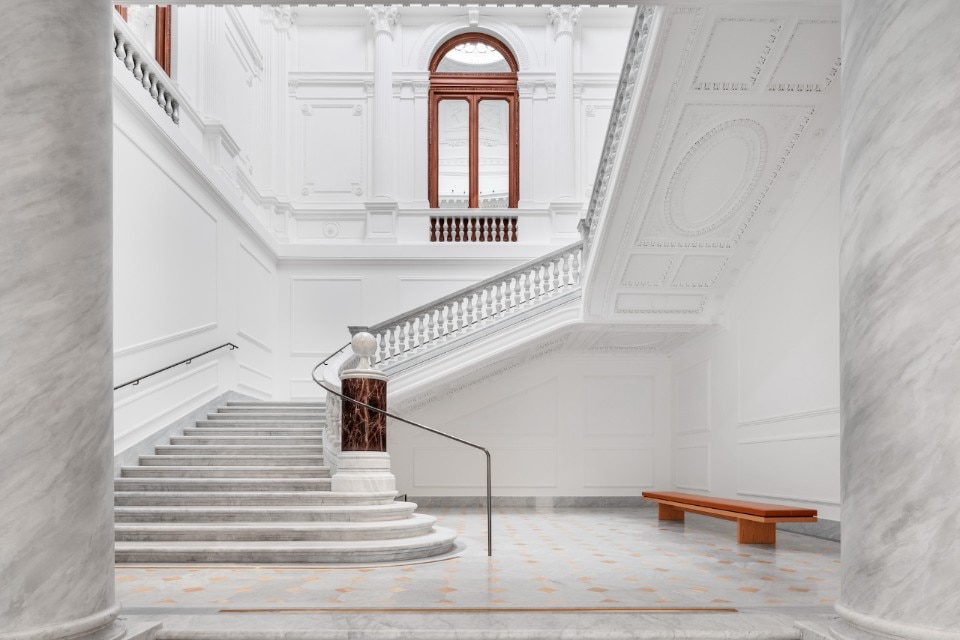
“It’s a big ethical question: either you don’t bother with the amount of work, or you realise it’s your responsibility. I am alive and this building will go down in history. I will take care of the building and look after it. These are important buildings: they will have another life and live through many, many decades of history. That’s the most important issue, and that’s why we love working with Apple, care is everything,” Behling continues. “Rome is the perfect example, if people care about the buildings, they keep going, and going, and going, and suddenly you have 100-year-old buildings.”
What is Rome for you? “When you are in Rome you have to respect history, you understand that you are only there for a short fragment of time, while the buildings and the whole city will continue without you”. This is the answer that seals our conversation.
- Architecture studio:
- Foster+Partners
- Project:
- Apple Via del Corso
- Location:
- Rome, Italy
- Client:
- Apple
- Completion:
- 2021


